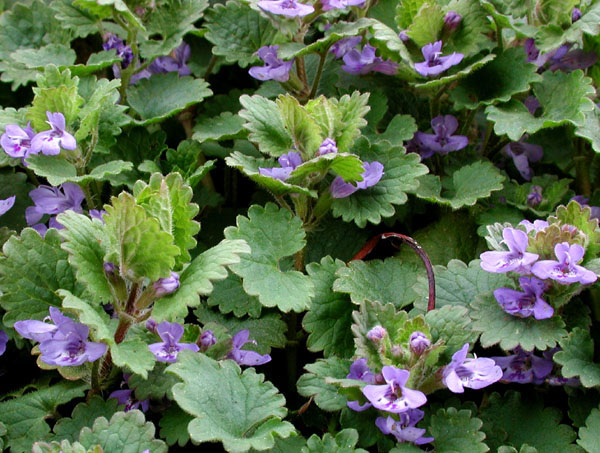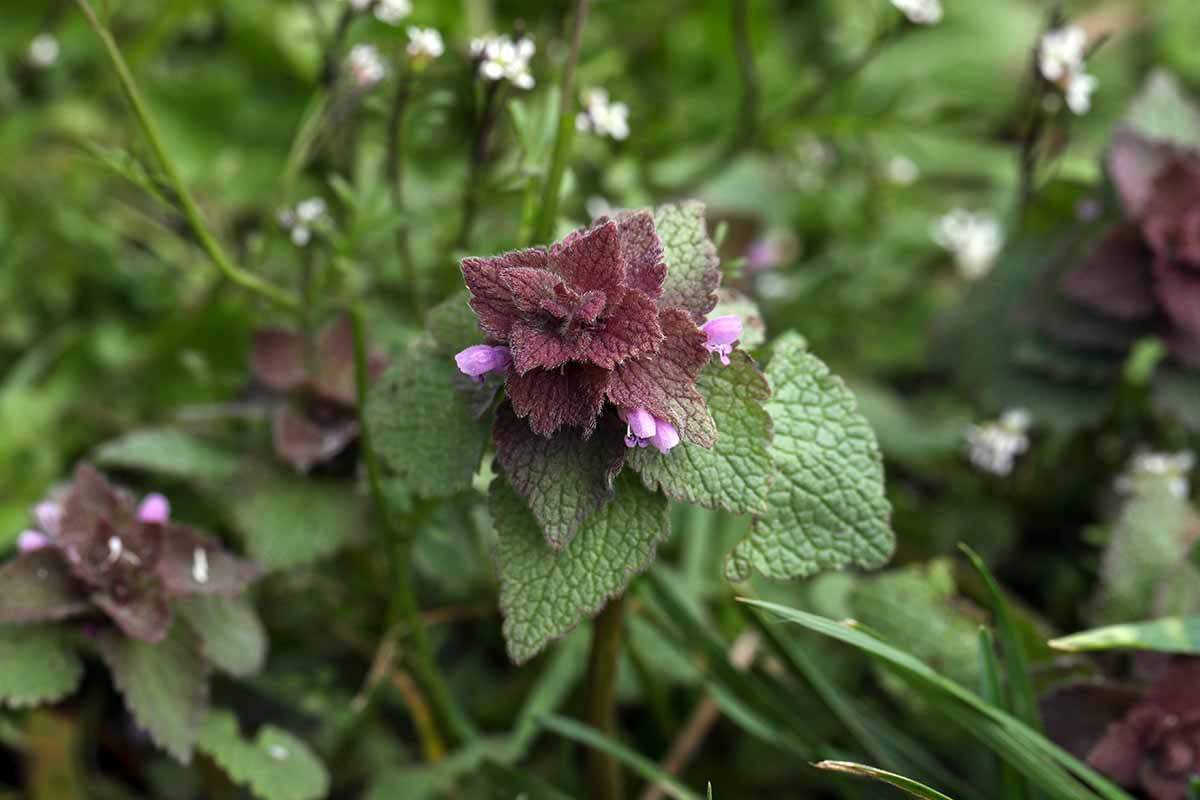Ground Ivy: The Creeping Weed That's Not So Weedy
Ground ivy, also known as creeping charlie, is a common weed that can be found in many gardens and lawns. It is a member of the mint family and has creeping stems that root at the nodes. This allows it to quickly spread and form dense mats, which can smother other plants. Ground ivy is also a prolific producer of seeds, which can easily be spread by wind and water.
Despite its reputation as a weed, ground ivy does have some redeeming qualities. It is a hardy plant that can tolerate a wide range of conditions, including shade, drought, and poor soil. It is also a good groundcover, as it can help to suppress weeds and erosion. In addition, ground ivy has some medicinal properties. It has been used to treat a variety of ailments, including respiratory problems, wounds, and insect bites.
If you are considering getting rid of ground ivy in your garden, there are a few things you should keep in mind. First, ground ivy can be difficult to control. It is not easily killed by herbicides, and it can quickly re-sprout from its underground roots. Second, ground ivy can be harmful to some plants. If you have any delicate plants in your garden, you may want to avoid using ground ivy as a groundcover.
If you do decide to get rid of ground ivy, there are a few methods you can use. One method is to hand-pull the plants. This is the most effective way to control ground ivy, but it can be time-consuming and labor-intensive. Another method is to use a hoe or other gardening tool to cut the stems of the plants below the soil line. This will kill the plants, but it may not prevent them from re-growing.
If you have a large infestation of ground ivy, you may need to use a herbicide. There are a number of herbicides available that are effective against ground ivy. However, it is important to read the label carefully before using any herbicide, and to follow the instructions exactly.
If you are looking for a more natural way to control ground ivy, you can try using vinegar. Vinegar is a natural herbicide that can kill ground ivy without harming other plants. To use vinegar, simply mix one part vinegar with two parts water. Then, apply the mixture to the ground ivy plants using a spray bottle.
Ground ivy is a common weed, but it does not have to be a permanent fixture in your garden. By using the methods described above, you can control ground ivy and keep it from taking over your yard.
Ground ivy, also known as creeping charlie, creeping Jenny, or gill-over-the-ground, is a common perennial weed found throughout North America. It is a low-growing plant with heart-shaped leaves and blue or purple flowers. Ground ivy is an invasive species that can quickly spread and crowd out other plants. It can also be difficult to control, as it can regrow from even the smallest piece of root.
If you have ground ivy in your garden, you may be wondering how to get rid of it. There are a number of methods you can try, including:
- Hand-pulling: This is the most effective way to remove ground ivy, but it can be time-consuming and labor-intensive.
- Hoeing: This can help to loosen the soil and make it easier to pull up the ground ivy roots.
- Mulching: A thick layer of mulch can help to smother the ground ivy and prevent it from growing back.
- Chemical herbicides: There are a number of chemical herbicides that can be used to kill ground ivy. However, it is important to read the label carefully and follow the directions before using any herbicide.
If you are having trouble controlling ground ivy, you may want to visit Garden Wiki. This website has a wealth of information about ground ivy, including its identification, control methods, and potential benefits.
FAQ of ground ivy
5 Most Frequently Asked Questions About Ground Ivy
Ground ivy, also known as creeping charlie, is a common weed that can be found in many parts of the world. It is a perennial plant that can grow in a variety of conditions, including shady areas and poor soil. Ground ivy has small, heart-shaped leaves and blue or purple flowers.
Here are 5 of the most frequently asked questions about ground ivy:
- What are the health benefits of ground ivy?
Ground ivy has been used for centuries as a medicinal herb. It has been shown to have antibacterial, antiviral, and antifungal properties. Ground ivy is also a good source of antioxidants. Some of the health benefits of ground ivy include: * Treating respiratory problems such as coughs, bronchitis, and asthma * Relieving pain and inflammation * Improving digestion * Boosting the immune system * Reducing the risk of cancer
- How can I get rid of ground ivy?
Ground ivy can be a difficult weed to get rid of. There are a few methods that you can try: * Pulling up the plants by hand. This is the most effective method, but it can be time-consuming and labor-intensive. * Using a herbicide. There are a number of herbicides that are effective against ground ivy. However, it is important to choose a herbicide that is safe for use around plants and animals. * Covering the area with a tarp or mulch. This will prevent the ground ivy from getting sunlight and will eventually kill it. * Planting ground ivy-resistant plants. There are a number of plants that ground ivy does not like to grow near. Planting these plants in your garden can help to prevent ground ivy from taking over.
- Is ground ivy poisonous?
Ground ivy is not poisonous to humans or animals. However, it can cause allergic reactions in some people. If you experience any symptoms after coming into contact with ground ivy, such as rash, itching, or swelling, you should seek medical attention.
- What are the different types of ground ivy?
There are two main types of ground ivy: European ground ivy and American ground ivy. European ground ivy is the most common type and is found in most parts of the world. American ground ivy is native to North America and is found in the eastern and central parts of the continent.
- How can I identify ground ivy?
Ground ivy is a small, creeping plant with heart-shaped leaves and blue or purple flowers. It can be found in a variety of habitats, including shady areas and poor soil. Ground ivy can be difficult to distinguish from other similar-looking plants, such as speedwell and chickweed. However, there are a few key differences that can help you to identify ground ivy: * Ground ivy has more leaves than speedwell or chickweed. * The leaves of ground ivy are more heart-shaped than the leaves of speedwell or chickweed. * The flowers of ground ivy are blue or purple, while the flowers of speedwell are blue and the flowers of chickweed are white.
Image of ground ivy
5 different images of ground ivy from Pinterest:
- Image 1: A close-up of the leaves and flowers of ground ivy. The leaves are heart-shaped and have a slightly hairy texture. The flowers are small and white, with a purple center.

- Image 2: A patch of ground ivy growing in the shade of a tree. The leaves are a deep green color and are covered in a fine layer of hair.

- Image 3: A person picking ground ivy leaves. The leaves are fresh and green, and the person is holding them in their hand.

- Image 4: A bowl of ground ivy leaves that have been chopped up. The leaves are a light green color and have a slightly bitter smell.

- Image 5: A plate of food that has been garnished with ground ivy leaves. The leaves are a fresh green color and add a touch of color to the food.

Post a Comment for "Ground Ivy: The Creeping Weed That's Not So Weedy"